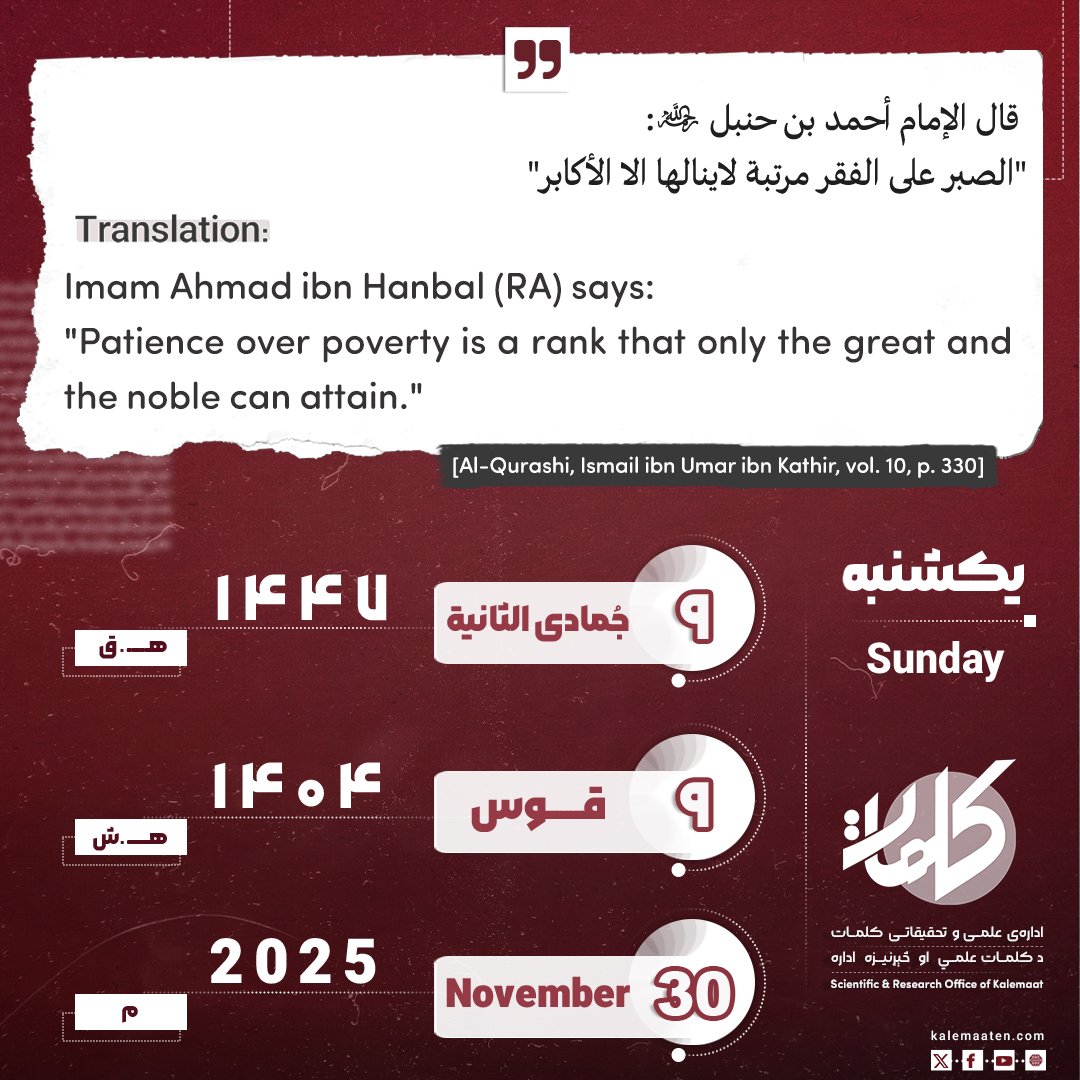Author: Abu Raef
The Role of Muslims in the Formation and Development of Science (Part 61)
Characteristics of the Islamic Garden
James Dickey emphasizes that Islamic Garden design, like Islamic architecture, cannot be described in Western terms, because it is not only outside the historical framework and developments of Western art, but also arises from a different intellectual context. He testifies that Islamic art has never been fascinated by the stark contrasts on which European intellectual models are based. [1]
Dr. Yahya Waziri, in his book “Al-Emarat Al-Islamiyya Wal-Bay’tah” (Islamic Architecture and the Environment), has outlined a number of distinctive features of Islamic gardens, including:
Inspiration from the Quran and Sunnah in the description of Paradise
Islamic gardens were inspired by Quranic and prophetic descriptions of Paradise, even in details such as trees, water, beds, seating, and perfumes. Among the verses that inspired Muslims to determine the appropriate location of gardens and earthly paradises is this verse: “مَثَلُ الَّذِينَ يُنفِقُونَ أَمْوَالَهُمُ ابْتِغَاءَ مَرْضَاتِ اللَّهِ و تَثبِیتًا مِّن أَنفُسِهِم كَمَثَلِ جَنَّةٍ بِرَبْوَةٍ.” Translation: “And the example of those who spend their wealth seeking the pleasure of Allah and for the strengthening of their hearts is like the example of a garden on a hill.” [2]
Muslims carefully understood that this verse refers to the fact that the best location for gardens is on high ground (Rabwah) because these areas prevent the roots of the tree from coming into contact with groundwater (which prevents growth) and also have good drainage.
To the extent that sometimes the trunks of trees were covered with gold leaf. For example, “Khomaruyyah ibn Ahmad ibn Tulun” covered the trunks of palm trees with gilded copper. This work was inspired by the hadith of the Prophet Muhammad (peace and blessings of Allah be upon him):
“There is no tree in Paradise except that its trunk is made of gold.”
The theory of making paradise
Islamic architecture has what can be called the “theory of making paradise”; an attempt to create earthly gardens inspired by paradise, in harsh climatic conditions. The design of gardens also became more beautiful and pleasing to the eye with the development of Islamic art and architecture, to display the joy and happiness that the Quran describes for the gardens of paradise: «حدائق ذات بهجة.» Translation: “Gardens of delight and freshness.” [3]
Verses from the Quran, hadiths or Islamic sentences were written on the doors and walls of the gardens.
Gardens were often built in houses and courtyards to both provide privacy and provide a pleasant alternative to public squares and gardens. An important feature of Islamic gardens was the preservation of privacy. For this reason, they were surrounded by high walls or palm trees to protect the interior space from outside views. [4]
Differences between Islamic and Western Views of Gardens
Finally, it is necessary to mention the differences between Islamic and Western views of gardens. Islamic philosophy emphasizes the connection of beauty with function, while Western civilization is more concerned with material and practical aspects.
James Dickey has said that the expulsion of the Muslims from Andalusia (the Moors) meant the end of Islamic gardening in Spain, even if the fall of Granada did not coincide with the change in taste during the Renaissance.
In the Renaissance, gardens were considered merely a complement to architecture; but in Islamic thought, the palace served the garden, not the other way around. [5]
Fountains
Fountains were part of the skill of Muslim gardeners, engineers, and artists in using water in gardens.
Water was used in Islamic gardens in a variety of ways:
Ponds shaded by trees;
Spouting to create movement on the water surface and prevent full reflection of light;
Water pipes at the top from which water dripped with a pleasant sound;
Salsabil, thin, gentle streams of water. [6]
Given the extent of gardens throughout Islamic lands and even inside homes, one can imagine countless fountains in each garden.
Even in the homes of the poor (as Will Durant describes) there was usually a central courtyard with a pond and sometimes trees. The higher-class houses had covered porches and wooden columns.
At the time of the Ottoman Caliphate in Belgrade, there were over 600 public fountains.
In Morocco, a project to restore the traditional fountains of the city of Fez was recently launched. According to statistics:
About 70 public fountains;
About 400 fountains in old houses, mosques and schools.
Historical sources state that these fountains have existed since the 16th century and were used for drinking, irrigation and animal water supply. This system is linked to a complex water network that dates back about 10 centuries.
Therefore, fountains were not just a luxury, but were part of the philosophy of Islamic civilization in the simultaneous material and spiritual exploitation of water. [7]
In the garden of “Jannat al-Arif” in Granada, the flowing water was guided with particular skill around the basin, creating beautiful semicircular waves. This was a special innovative style that did not exist before.
Inside the basins, fish and birds such as ducks were sometimes kept. Fountains prevented insects from growing on the water surface and were also used to produce a mist (spray) for cooling with minimal water consumption.
Public fountains were a combination of meaning, beauty, and practical function. The best examples are those of mosques in the Balkans under the Ottoman Caliphate; such as:
The Mehmed Koski Pasha Mosque;
The Hurtados Bey Mosque;
The Sinan Bey Mosque in Kajiniç;
The Sultan Ismi Mosque in Baitaş;
The Mustafa Pasha Mosque in Skopje;
The Gazi Khosrow Beg Mosque in Sarajevo;
The Alaça Mosque in Fuşca.
These fountains provided safe drinking water, in addition to being used for performing wudu and washing. [8]
The masterpiece of the Lions Fountain in the Alhambra Palace
In Andalusia, especially in the Alhambra Palace, the fountain in the Square of the Lions (Sahat Al-Aswad) was not only part of the water supply network, but also a symbol of the beauty of sculptural art in Islamic civilization. The container of this fountain rests on the shoulders of 12 lions, each of which spout’s water.
Even more amazingly, this fountain was also a water clock as follows:
At 1 o’clock: water from the mouth of a lion;
At 2 o’clock: from two lions;
And so on until 12 o’clock, when all the lions were spraying water.
After the fall of Andalusia, the Spaniards tried to understand its mechanism, but they destroyed it.
In the end, fountains were a beautiful, efficient and sometimes scientific and innovative part of Islamic gardens. [9]
Continues…
Previous Part/ Next Part
References:
1. What have Muslims given to the world? P. 632.
2. Al-Baqarah: 265.
3. Al-Naml: 60.
4. Islamic Architecture and the Environment, p. 214 and thereafter.
5. What have Muslims given to the world? P. 634.
6. Islamic Architecture and the Environment, p. 217.
7. What have Muslims given to the world? P. 636.
8. What have Muslims given to the world? P. 636, citing historical monuments in the Balkans, Abdul-Baqi Khalifa, Asharq Al-Awsat Magazine.
9. What have Muslims given to the world? P. 637, citing astronomical reflections on Islamic architecture, Walid Ahmed Al-Sayyid, Al-Jazirah Magazine, Saudi Arabia.



